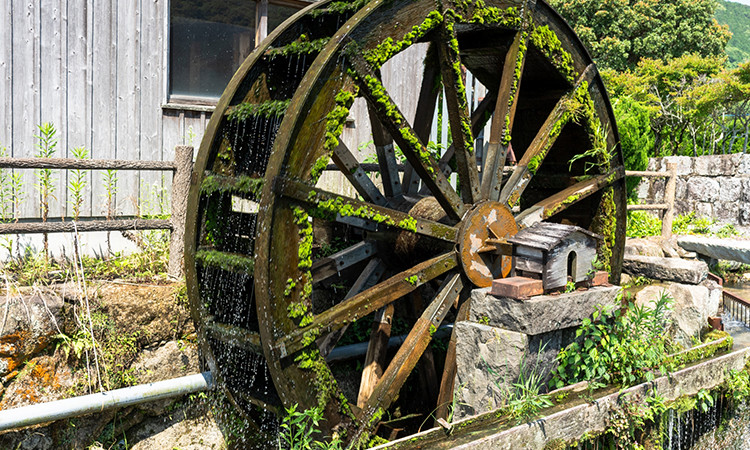Vision and History
Kanzaki: A Soumen Production Area with a 390-Year History

The summer is approaching, and so is the time for soumen. Kanzaki City, which is blessed with clear streams from the Sefuri Mountains, is the third largest soumen producing area in Japan. Kanzaki soumen is characterized by its strong flavor and aroma, and its ability to retain its firmness even after being cooked. We offer a variety of soumen that are delicious both cold and hot.
History of Kanzaki Soumen

Kanzaki soumen was born about 390 years ago in 1635. A monk from Shodoshima was traveling when he fell ill in Kanzaki-juku, a post station on the Nagasaki Kaido. A local merchant took care of him, and the monk was so grateful that he taught the merchant the secret of making hand-pulled soumen.
Kanzaki: A Favorable Location for Soumen Production

High-quality water from the Sefuri Mountains
The Jorbaragawa River that flows through Kanzaki City is characterized by its excellent water quality due to its granite composition. Soumen is made with simple ingredients: wheat, water, and salt. Therefore, good water is essential for making delicious soumen.

Sado Plain, a wheat production area
Sado Plain in Saga Prefecture has been a major wheat-growing region for centuries, thanks to its warm climate and other favorable conditions. The area is the third largest wheat-growing region in Japan, after Hokkaido and Fukuoka Prefectures. The quality and yield of the wheat grown here are highly regarded.

Utilization of water wheels powered by the Jorbaragawa River
In the Meiji period, there were about 60 large water wheels in the Jiniyama area of Kanzaki Town. These water wheels were used primarily for milling and noodle making.
Kanzaki: The Birthplace of Mechanical Soumen Production
The genius inventor from Saga who invented the soumen making machine: Masaki Terusato
Masaki Terusato was born in Saga Prefecture. He was an inventor and businessman who lived from the Meiji to Taisho periods. He was later referred to as “the Toyoda Sakichi of the west” along with Sakichi Toyoda.
Terusato was born into a family that ran a sake brewery. His father died when he was six years old, and he was raised by his mother. His mother taught him to “make a name for yourself and repay your ancestors.”
Inspired by the invention of the steam engine by James Watt, Terusato decided to develop a machine for making soumen, which was then a popular industry in Saga. This was because soumen made from wheat flour was sold for about four times the price of wheat flour itself at the time.
Terusato left the sake brewery to his employees and devoted himself to research and development. However, the development was difficult. The brewery went bankrupt, and he had to sell his land and household goods.
Despite these setbacks, Terusato did not give up. In 1883, after eight years of research and development at a cost of around 90,000 yen, he finally succeeded in developing a soumen machine. This was the first “noodle manufacturing machine” in Japan, and it was widely used in Kanzaki, where soumen production was already well-established. As a result, Kanzaki City became known as the “birthplace of mechanical soumen production.”
The skills of the craftsmen who drew out the power of machines
Even before the invention of the soumen machine, Kanzaki was a major center for hand-pulled soumen production. The introduction of the soumen machine made it possible to produce large quantities of soumen quickly. However, at first, the hand-pulled soumen makers were not satisfied with the quality of the soumen made by the machine.
“No matter how easy it is to make soumen, this is not Kanzaki soumen.”
The craftsmen decided to improve the soumen machine on their own, relying on their experience and determination. They tried changing the angle of the blades used to mix the flour, the tilt of the tank, the amount of water added, and the speed of the rollers.
The craftsmen knew the “correct answer” for soumen from their experience. They thought, “This is the result that should be obtained in this process, so let’s try modifying the machine in this way.” In this way, they gradually improved the performance of the soumen machine to match the “correct answer.”
As a result of the craftsmen’s efforts and dedication, the technology for making soumen






